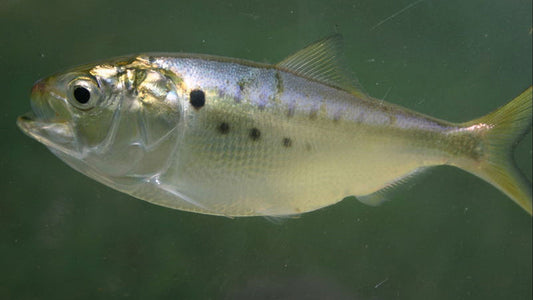
What Is The Difference Between Slow/Medium/Fast Action Fly Rods?
Share
Written by: Leif Catania
Photos: Josh Thelin
Rod Speed (what a confusing classification). Everyone asks about it in the shop, and unfortunately a fraction of those people have any idea what it means. Usually when purchasing a new fly rod, the three differentiators of fly rods are weight, length, and speed (or action). Weight and length are fairly straight forward, however I’ve found that speed is what will trip people up a lot. The action of a fly rod refers to the speed of a rod, or frankly, how long that rod takes to load.
The industry standard for the east coast right now for the “best all-around trout fly rod” is the 905 (or 9ft, 5wt). Now that categorization fails to account for speed. Depending on the fishing you are doing, if the action of that rod is not suitable, you’re going to likely have a difficult time casting. Kind of renders the whole “best all-around fly rod” obsolete, doesn’t it?
Since that action or speed is very important, my first question to anyone looking at a new rod is, “What type of fishing would you like to do?” So let’s address the various preferred fishing methods for various speeds. It is best to think of rod speed on a spectrum from slow - fast, with “medium” being in the middle. For the sake of this blog, let’s divide them into:
- Slow
- Medium
- Fast
Quick Disclaimer: Rod Action can be very ambiguous between manufacturers. For example, R.L. Winston listed their famous BIIIX as a fast rod, but in comparison to other rods in that “fast” category it is a borderline pool noodle. That is why it is incredibly important to swing by your local fly shop and cast rods and/or ask lots of questions before purchasing.

Slow:
Slow rods are the “purist” rods of the industry. Sometimes referred as a mid-flex, their slow gradual taper allows for the rod to flex almost throughout. This creates a very noodle-like rod. While sometimes difficult for casting in windy scenarios, slow rods are an absolute pleasure to cast and are revered for this. Fiberglass and bamboo rods fall under this category, and they’re typically the slowest rods available.
Scenarios: The slow nature of the rod allows for delicate casting and are ideal for softer presentations, but is unable to accommodate heavier rigs. In addition, slower rods are more difficult to cast longer distances. Therefore these types of rods are used almost exclusively for dry fly fishing.
Examples:
Echo River Glass: (https://allpointsflyfishing.com/collections/echo-fly-rods/products/echo-river-glass-fly-rod),
TFO Finesse: (https://allpointsflyfishing.com/collections/fly-rods/products/tfo-finesse-trout-fly-rod)
Medium / Medium-Fast:
Medium Speed Rods find themselves smack dab in the middle of slow and fast. Usually more frequently labeled as “medium fast”. These rods are a combination of a slow rod for pleasant casting and “feel” while also a faster rod to allow for greater distances, wind, or heavier flies/rigs.
Scenarios: Medium Rods are versatile. The combination of the feel of a slow rod with the strength of a fast rod makes them perfect for dries, nymph rigs, and small streamers. This rod will however also have some difficulty with larger streamers, sinking (tip) lines, or nymph rigs with significant weight.
Examples:
Echo Dry Fly Rod: (https://allpointsflyfishing.com/collections/echo-fly-rods/products/echo-dry-fly-rod)
Sage Motive: (https://allpointsflyfishing.com/collections/sage-rods/products/sage-motive-fly-rod)
T&T Zone: (https://allpointsflyfishing.com/collections/thomas-thomas/products/thomas-thomas-zone-fly-rod-1)
Fast:
Fast rods have steep, quick tapers that allow them to only flex in the tip section of the rod. This type of flex allows the rod to load very quickly and accommodate heavier flies or lines. The only draw back with fast rods is they will typically lose some “feel” while casting and can sometimes overpower small flies (which can reduce quality of presentation of dries)
Scenarios: Fast rods are still all-around rods, simply because they can cast anything. Due to their power, these rods excel at casting in windy scenarios or long distances. If you are doing any sort of saltwater or streamer fishing, this speed of rod can be advantageous. Also, if you want to use a heavy sinking line, or “quickshooting” type of tapered line, certainly a fast rod will help as these can sometimes overpower slower rods. Fast rods will also handle nymphing scenarios or a dry-dropper better (big dries are very wind resistant!)
Examples:
Sage X: (https://allpointsflyfishing.com/collections/sage-rods/products/sage-x-fly-rod),
Echo Boost: (https://allpointsflyfishing.com/collections/echo-fly-rods/products/echo-boost-fly-rod)
T&T Exocett: (https://allpointsflyfishing.com/collections/thomas-thomas/products/thomas-thomas-exocett-fly-rod)
TFO BVK (https://allpointsflyfishing.com/collections/fly-rods/products/tfo-bvk-fly-rod)



3 comments
Great information thank you kindly sir. Could you please include how to identify the speed rating on a rod. Is it a Number ? What is a sure way to tell before purchase. (especially for second hand equipment.) Many thanks
Tim
I am the Program Lead for Project Healing Waters, Great Falls Auburn Program in Auburn, Maine.
I am reading your blob post on “Fly Rod Speeds”. With your permission and assistance I would like to incoperate this information into one of the classes that we hold on a monthly basis for the disabled veterans who attend. Unfortunately I am not able to copy or print the text of this blob. Thanks for any assistance you might be able to offer. Ed